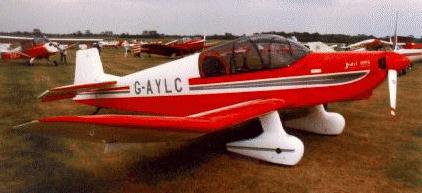
The Jodel DR100 Series
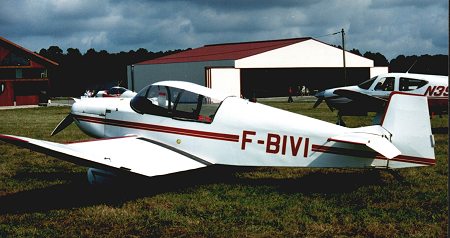
F-BIVI DR.100A Ambassadeur
The Jodel DR 100 series came into being after Pierre Robin, a flying instructor at the time, wanted to build a 3 seater version of the D11. He bought the D10 wing from Delemontez for the price of the wood alone and started building what became known as the Jodel-Robin. Delemontez had some reservations, but backed Robin up by doing a number of calculations for him.
|
The plane was finished and flown by Robin. At that time, Robin and Delemontez decided to join forces to see if they could create a marketable version of the Jodel-Robin. For several reasons, the Jodel-Robin could not be certified, so Delemontez ended up designing a completely new aircraft. This aircraft was to be produced by Robin, who had decided to found a company for this purpose, called Centre Est Aeronautique (CEA). |
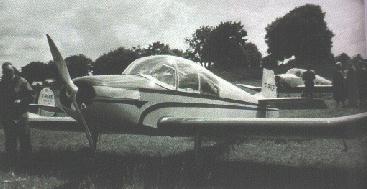 The D11 heritage can be clearly seen from the engine cowling, tail and undercarriage |
In 1958/59 the prototype of the new aircraft was finished and called the DR100 Ambassadeur. DR for Delemontez-Robin and 100 from the original D10 numbering. Immediately after the first flights of the prototype, Robin started producing the DR100's.
Earlier examples had a 90 hp Continental C90 engine, later ones were fitted with 100 hp O-200's and 105 hp Potez 4E20 engines. The DR100 series features the typical cranked wing, a spatted (taildragger) undercarriage, four seats and is of wood and fabric construction.
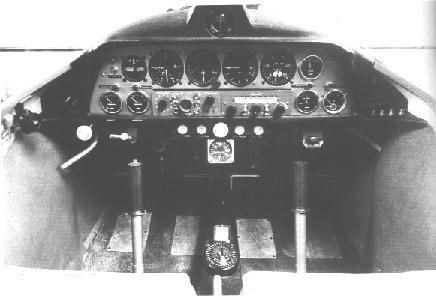
|
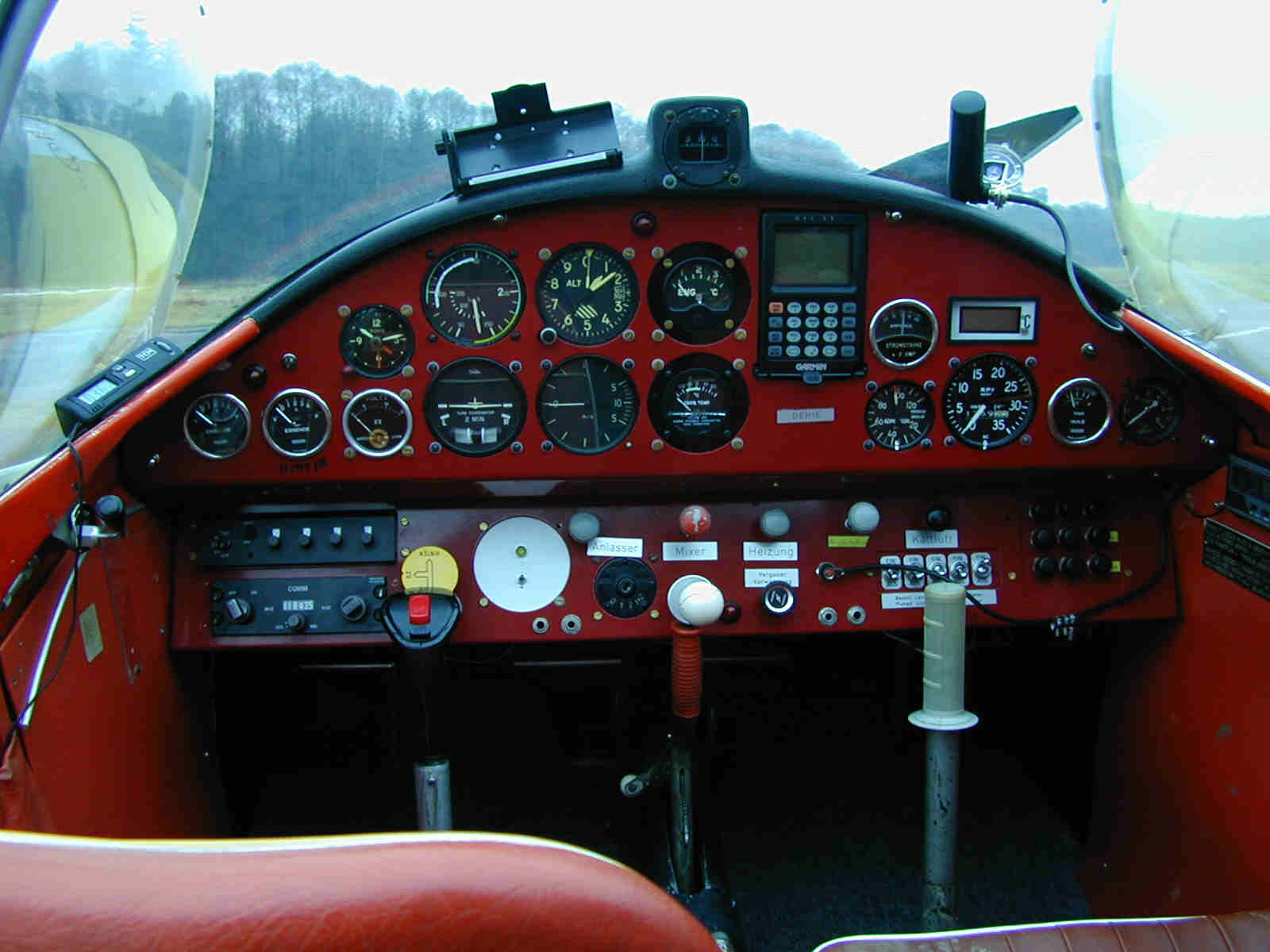
|
The DR series progressed through a number of changes, giving it the following names:
- DR100 - First produced with 90 hp Continental C90
- DR105 - As for the DR 100, but with hydraulic brakes
- DR1050 - As for the DR 105, but with 100 hp Rolls Royce or Continental O-200 engine.
- DR1051 - As for the DR 1050, but with 105 hp Potez 4E20 engine.
|
Pierre Robin and his wife took their factory tuned and streamlined DR1051 to a number of air races, winning every race they entered. The race around Sicile being the most notable race of them all. The streamlining went as far as removing the air brakes, removing the door handles and taping up the doors after the Robin's had entered the plane (which in a sunny 43 degrees Centigrade is not a comfortable thing to do). The tailwheel received its own wheel pant as well. Furthermore the Robin engineers managed to squeeze every last horsepower from the Potez engine. The result of these efforts were an average speed of 270 kph during the race, which is the Vne of the stock model! |
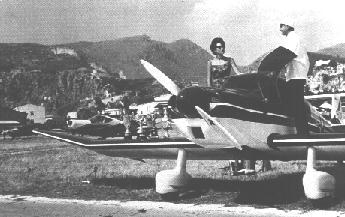 |
It was not uncommon for a race to see 4 Jodels in the top 5 results, such was the lead of the type over its contemporaries. The races did very well for Jodel sales, and large numbers of orders were placed.
After the results of the races, Robin decided to incorporate a number of the things that they had learnt from the races in the design of the DR1050 "Ambassadeur". This lead to the "Sicile" model. The most notable changes were:
- More streamlined wheel pants
- A streamlined air intake for the carburator, situated underneath the propellor.
It was in 1963 that Robin and delemontez started thinking of changing the tail section of their plane, to give it more directional stability and a more powerful elevator. Robin took to work to design the DR1050 MM1 model. It was at this time where SAN, a company that was building DR1050's under a license agreement, introduced the DR1050 M model. This plane was a DR1050 with the tail section of the recently introduced D150 Mascaret. Thus far, SAN had given their DR1050's the name "Excellence", and the new model was called "Excellence Record".
Soon after SAN introduced the Excellence Record, CEA entered their DR1050 MM1 Sicile Record. The difference between the two is very notable. The SAN model has a more angular transition between the turtledeck and the vertical tail, just like the D150, whereas the CEA version has a fluent rounded profile. The following two pictures are of a SAN DR1050 M and a CEA DR1050 MM1.
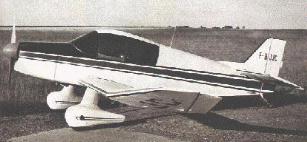 of the vertical tailplane |
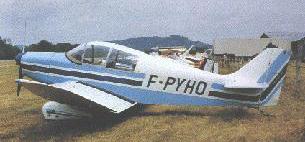 |
Mainly due to hp restrictions, the loading capacity is not quite up to having all four seats occupied. The back seats are not all that roomy either. Finally, loading up the back seats quickly pushes the Center of Gravity too far aft (partially solved in the later M models with revised tailplanes). The DR 100 series should be looked at as a large two seater, or a 2+2 at best.
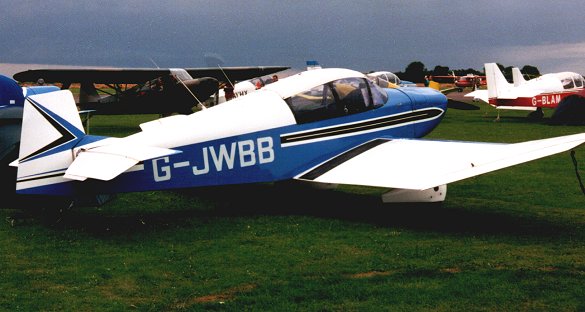
|
Another problem that the taller among us encounter (I am 1.93 meters (6'4") tall), is the fact that depending on the factory and the model year, sometimes the panel extends rather far downward. When you are over 1.85 meters (6'), then your shins will probably hit the panel when you try to work the pedals. Numerous people have solved this problem by simply removing some panel. The seats are adjustable, but not over a wide range and the seatbacks are rather low. Jodels are built for shorties. |
Many homebuilders have fitted or retrofitted flaps to their DR1050's. These are copies of the flaps that can be found on the DR200 and onward models. The air brakes are omitted and a rod running aft from the original airbrake torque tube mechanically operates the flaps, just like it is done on later factory models. A careful look at the photo's of G-AYLC and F-PYHO on this page reveals two instances of these retrofitted flaps. As far as I know, no flaps were ever fitted to the DR100 by the factory.
Curious detail that I have seen on the DR 100 and on several other types as well: Due to an automotive background of Joly (he had a Citroën garage), automotive details can be found on their aircraft. Most notable are the door handles, which are 1950's Citroën 2CV items. And since the 2CV featured "suicide" type doors (hinged at the back), the door locks in the car are facing forward. In the Jodel they face backward, so the left and right handle needed to be switched in the transition. This explains why the DR 100 (and other Jodel/Robin models as well) have the door lock on the righthand side of the plane!
Incidentally, with a little work, the door handles can be swapped, yielding a door lock on the proper door. Check the tech section for more details.
Parts of the DR100 series are still produced and plans are still being sold by SAB.
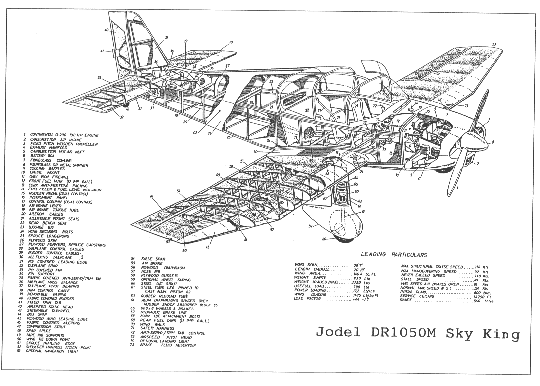
Exploded view of the DR1050. This is the Australian version, nicknamed Sky King.
Click on the picture to get a large version (339 kB).
Specifications of DR 1050
| Overall dimensions: | ||
| Length | 21.4 ft | 6.5 m |
| Height | 5.8 ft | 1.8 m |
| Wing span | 28.8 ft | 8.72 m |
| Weights and loadings: | ||
| Empty weight (with oil) | 913 lbs | 415 kg |
| Max Take off weight | 1650 lbs | 750 kg (780 kg M model) |
| Max Landing weight | 1630 lbs | 740 kg (780 kg M model) |
| Usefull load | 737 lbs | 335 kg |
| Power loading | 16.5 lbs/hp | 7.5 kg/hp |
| Fuel capacity (front) | 12 gal | 55 l |
| Fuel capacity (rear) | 12 gal | 55 l |
| Unusable fuel in aft tank | 1.5 gal | 6 l |
| Max load factors | +3.8 G | -1.5 G |
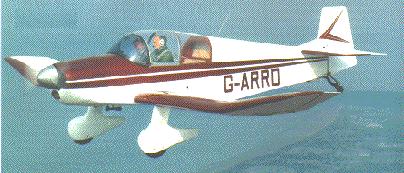
| Other specs: | ||
| Gear | Tailwheel | |
| Seats | 2+2 | |
| Controls | Stick and rudder | |
| Material | Wood and fabric | |
| Engine: | ||
| DR100 | 95 hp | Continental C90 |
| DR105 | 95 hp | Continental C90 |
| DR1050 | 100 hp | Continental/Rolls Royce O-200 |
| DR1051 | 105 hp | Potez 4E20 |
| Fuel Continental | 80/87 octane | Mogas permitted |
| Fuel Potez | 100/130 octane | Mogas not permitted |
| Fuel burn (1050), 75% pwr | 5.5 gph | 21 liter/hour |
| Fuel burn 55% pwr | 4 gph | 15 liter/hour |
| Performance: | ||
| Max speed, sea level | 130 mph | 210 km/h |
| Cruise speed | 115 mph | 185 km/h |
| Vne | 169 mph | 270 km/h |
| Stall speed (indicated) | 55 mph | 88 km/h |
| Climb rate | 600 fpm | 3 m/s |
| Take-off roll | 980 ft | 300 m |
| Landing roll | 800 ft | 250 m |
| Range 75% power, no reserves | 575 nm | 1035 km (5.2 hours) |
| Range 55% power, no reserves | 650 nm | 1170 km (6.9 hours) |
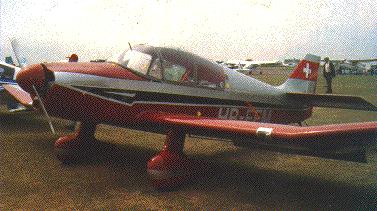
In 1966, the DR 100 series was replaced by the Robin DR 200 series.
Author Hans Teijgeler
The photos in this web site are from the excellent book by Xavier Massé,
sent in by happy Jodel owners, lifted from the web or taken by myself.
